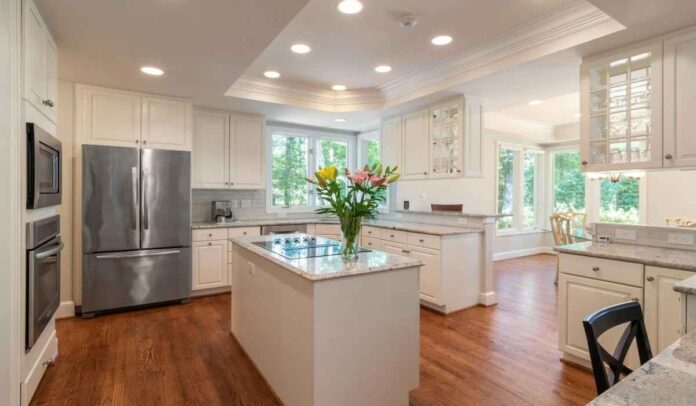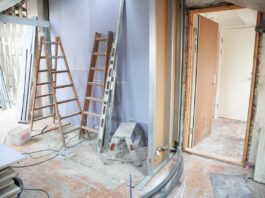We all know summer brings the heat, but sometimes it hits harder and faster than expected. One day it’s a breezy 85, and the next, your phone’s telling you it’s 105 by noon. If you live in Northwest Austin, you’ve probably felt this before. It’s not just the heat—it’s the sudden spike that makes it hard to keep your home comfortable.
The good news? You can prepare. Whether it’s your first summer in your home or you’ve lived there for years, getting ahead of a heatwave doesn’t take a major renovation. You just need to focus on a few practical things. Here’s how to stay cool, safe, and ready—without waiting for the forecast to scare you into action.
Check and Maintain Your Air Conditioning System
This one’s simple but important. If your air conditioner isn’t running well, it won’t keep up when the temperature jumps. A heatwave isn’t the time to figure out your AC has a problem—it’s the time to know it’s working like it should.
Start by checking your air filters. A dirty filter slows down airflow and makes your system work harder. Replace them regularly—every one to three months is a good rule. Also, take a quick look at the vents and outdoor unit. Clear away any dust, pet hair, or debris that might block airflow.
You should also test your AC before a heatwave is expected. Turn it on, see how fast it cools, and listen for any unusual sounds. If it’s been a while since your last check-up, it might be worth scheduling a professional inspection.
If you’re in the area, One Hour Heating & Air Conditioning® of Northwest Austin offers reliable HVAC inspections and emergency repairs to keep your home cool when it matters most. They’re known for their quick service, straightforward pricing, and 24/7 availability—which is exactly what you want if the AC goes out during a heatwave.
Seal Drafts and Block Out Sunlight
Even small gaps around doors and windows let in hot air, which makes your AC work harder. Sealing those up is one of the easiest ways to keep your home cooler.
Check your weather stripping around exterior doors. If it’s cracked or peeling, replace it. You can also use draft stoppers at the base of doors to block warm air. For windows, make sure they close tightly and don’t rattle.
Sunlight also heats up your space quickly. Use blackout curtains or thermal shades, especially in rooms that get direct sun. You can also use reflective window films to reduce the amount of heat that comes in without blocking the view.
Upgrade to a Smart Thermostat
Smart thermostats aren’t just trendy—they’re useful. They adjust the temperature in your home based on your schedule, which helps save energy and keeps things more stable during a heatwave.
Instead of blasting the AC all day, you can program your thermostat to cool your home before you get back from work. Many smart models also let you control them from your phone. If a heatwave hits while you’re out, you can make changes right away.
Some even track local weather patterns and make automatic adjustments. That means your home stays comfortable without you needing to guess what setting is best.
Create Airflow with Fans and Ventilation
Fans are great for moving air around your home, which can make it feel cooler even if the temperature stays the same. Ceiling fans are best, but box fans or tower fans also help a lot.
Set your ceiling fans to spin in a counterclockwise direction during the summer months. This helps circulate cooler air by moving it downward, making the room feel cooler and more refreshing.
You can also improve ventilation by opening windows in the evening or early morning when temperatures drop. Just remember to close them again once it heats up to keep cool air inside.
If your bathroom or kitchen has exhaust fans, use them. They pull out hot air and steam, which helps reduce overall warmth inside.
Focus on Heat-Safe Cooking and Appliance Use
Cooking inside can turn your kitchen into an oven—literally. Ovens and stovetops release a lot of heat, which spreads through the house.
During a heatwave, try to avoid using them. Go for meals that don’t need cooking or use smaller appliances like microwaves or air fryers. Slow cookers and pressure cookers are also good options—they produce less heat and can still make full meals.
If you have an outdoor grill, now’s a great time to use it. You can enjoy a summer meal without heating up your kitchen.
It also helps to limit the use of dishwashers, dryers, and even computers during peak heat hours. These appliances give off heat and make your AC work harder.
Prep an Emergency Heat Kit
Even with the best prep, sometimes the power goes out or your AC needs an emergency repair. That’s why it’s smart to have a few basics on hand to keep everyone cool.
Start with cold packs or frozen gel wraps. Keep them in the freezer so they’re ready to go. Cooling towels that activate with water are also great—they help lower your body temperature quickly.
Battery-powered fans can make a big difference if you lose power. Also, store a few extra water bottles so you stay hydrated without having to run to the store.
If you have kids, pets, or older adults at home, this kit can really help in those first few hours of discomfort. It doesn’t take much to pull it together, and you’ll be glad it’s ready if something happens.
Extreme heat doesn’t always give you a warning. But when your home is ready, you don’t have to panic. You just turn on the AC, close the curtains, and go about your day like normal.
By checking your system early, sealing off drafts, and making small changes in how you use appliances, you can stay cool even when the temperature rises fast.
And if your AC ever does give you trouble, knowing who to call—like a trusted local provider—makes it a whole lot easier. Small prep steps now mean a safer, more comfortable home when the heat rolls in.



